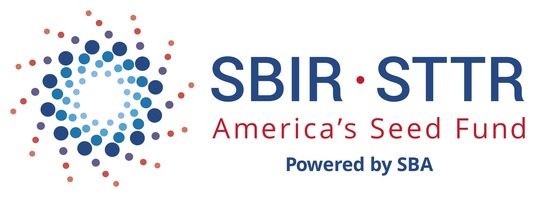Introduction to SBIR/STTR
The Small Business Innovation Research (SBIR) and Small Business Technology Transfer (STTR) programs are two of the largest bases for technology commercialization within the United States. They were created to help small businesses research and develop technology-driven products that have the potential to be commercialized.
All of these products are created with the same goal, which is to improve health. Not only do these programs help to potentially create lifesaving technology, but they help small businesses obtain access to federal funding to be able to create these technologies. Examples of some SBIR/STTR funded projects are those with applications in the Army, Navy, NASA, and Air Force.
Back in 1982, Congress created the SBIR program, and shortly after, in 1992, the STTR program was also created. The funding comes from eligible governmental agencies, as these programs require those specified agencies to set aside a certain percentage of their budget for small businesses to partake in research and development. Based on the feasibility of the R&D, many of those potential technologies are then commercialized.
There is a series of qualifications you must pass in order to be considered eligible for an SBIR or STTR grant. You can learn more about Small Business Eligibility here:https://sbir.nih.gov/about/eligibility-criteria.
Starting your next SBIR or STTR project can be painless if you hire the right team to help. Did you know that Butler Technologies is a Small Business Innovation Research (SBIR) and Small Business Technology Transfer (STTR) Awarded Printed Electronics Manufacturer? If you have a new idea or are looking to start your next project, you’ve come to the right place. Our team of experienced engineers are readily available to help you through every Phase of your SBIR/STTR project.
The 3 Phases
There are 3 steps required to receive SBIR/STTR funding. Our team at Butler Technologies uses very similar steps in order to prove your product’s viability.
Phase I: Proof of Concept
Phase I is the first step in the process. It’s during this phase that you can determine the technical merit, feasibility, and potential commercialization of the product. When taking into consideration the technical viability of the product, you would present your concept to our team and we would help you determine whether this is a technically sound project.
It’s during this phase that our team would also help you recognize whether there is a potential for commercialization of this concept. Although it may be a practical product design, is there a market for it? This is just one of the many questions that our team will help you to research further. This phase typically doesn’t exceed $150,000 and 6 months (for SBIR projects) or 1 year (for STTR projects).
 Phase II: Research and Development
Phase II: Research and Development
Although some R&D takes place during Phase I, Phase II is the step that specifically revolves around the research and development of your concept. After determining your product’s feasibility, we take a deeper dive into your concept’s creation. During this phase, we will help you to prototype your product’s design. It’s also during this phase that we will test the functionality of your prototype so that any corrections/revisions to the design can be properly addressed. In some cases, this Phase can also include a small pilot run.
Your SBIR/STTR funding is determined by the technical merit established in Phase I, as well as the commercial potential established during Phase II. Please note that in order to move onto Phase II, you must first be considered eligible during Phase I. This phase typically doesn’t exceed $1,000,000 throughout its 2-year timeframe.
Phase III: Commercialization
After successfully completing both Phases I and II, you will transition into the last and final stage, stage III, called Commercialization. Phase III means the research and development of your design have been tested and determined feasible for introduction to the market. Please note that funding is not provided for Phase III.
Preparing a Proposal
After determining the feasibility of your product’s design, we must prove the solution it would provide to a technical problem. In order to be approved for your SBIR/STTR proposal, you must pass a series of 3 questions.
- The technical approach must have a reasonable chance of meeting the topic objective.
- The approach must be innovative, not routine, with commercial applications.
- The company must have the capability to implement the technical approach and has (or can) obtain the people and equipment suitable for the task.
Our team at BTI can aid in the proposal creation for your project and work towards helping you to win the bid. We can also help with estimating the costs that would be needed in order to bring your product to market.
Using Consultants & Subcontractors to Add Capacity to Your Project Team
Oftentimes, the small businesses applying for the SBIR/STTR funding don’t have the capabilities to carry out their project’s creation in-house. Because of this, many of these small businesses reach out to consultants and/or subcontractors. Finding the right people to work on your project can be a tough and tedious task. Our team at Butler Technologies can help you every step of the way. We are a full-scale manufacturer with vast experience in the technology arena.
With an SBIR funded project, up to 33% of the Phase I project, and up to 50% of the Phase II project, can be subcontracted to a consultant or subcontractor. STTR funded projects are a little different, as they require up to 30% of the project to be subcontracted. Our team can help you to track our involvement in your project and can help you up to the maximum time allotted to do so.
The Technology We Provide
At Butler Technologies, we have the technical experience you need to get your project off the ground. Our team of engineers can help create several unique technologies such as printed biosensors, flexible printed heaters, force-sensing resistors, and printed antennas. Whatever your project may need, you can trust that our team is more than ready to help you every step of the way. We begin prototyping at Phase I and can help with preproduction and full-scale manufacturing as your project transitions into Phases II & III.
Conclusion
SBIR and STTR play an integral role in many small businesses. Especially those who would otherwise lack the funding to bring their concepts to reality. The funding helps these small businesses to develop life-sustaining products. The funding provided through both SBIR and STTR helps small businesses break into federal R&D, create health-improving products, and stimulate economic growth. Without these programs, we’d lack many of the newfound technologies that we see today. If you’re thinking about starting your next SBIR or STTR project, please contact our team to help you through every step of the project.
 Meet the Author: Jaclyn King
Meet the Author: Jaclyn King
Jaclyn is a Marketing Communications Specialist on the BTI Team. She serves as the Content Manager, where she primarily manages social media channels, SEO, Public Relations, and website development. To get to know more about Jaclyn, check her out on LinkedIn!
